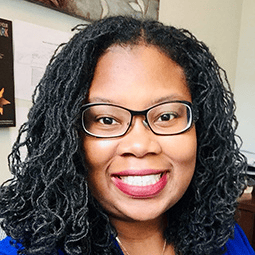This interview is the first in a two-part series featuring AHA Equity Award winners Albert Camarillo (Stanford Univ.) and the Department of History at the University of Texas at El Paso. The questions were e-mailed to both winners. Their responses have been edited for length.
Al Camarillo is the Miriam and Peter Haas Centennial Professor in Public Service, Leon Sloss Jr. Memorial Professor of American History, and special assistant to the provost for faculty diversity at Stanford. His unparalleled contributions to Mexican American history include seven influential books and dozens of articles. His more than 40-year commitment to mentorship has resulted in generations of scholars of color whose research, teaching, and leadership have influenced numerous fields of study and the profession as a whole.
What are the most important goals historians should work toward to advance equity (for example, getting more undergraduates into the PhD pipeline or diversifying course offerings)?
AC: Colleagues must first join together to make (or redouble) a commitment—and to develop concrete plans—for increasing graduate admission of students of color with fellowship aid. The departments must then make the case to their deans and/or provosts/presidents that fellowship support for students of color is a high priority, for the department and the university. There are a number of networks colleagues can tap into (e.g., lists of Mellon Mays Fellows) to help identify prospective graduate students of color. Reaching out to students in their junior and senior years goes a long way in helping to recruit graduate students. The hiring of historians of color must also be a top priority.
How can individuals and institutions model leadership around issues of equity? What are concrete steps anyone can take?
AC: The commitment to equity and diversity must begin with a policy statement that reflects the goals and aspirations of the university or college. The policy must be articulated and supported annually by the president/provost and by the school deans. Department chairs should take responsibility to discuss the policies with colleagues and consider how the department can best address issues of equity and diversity in its curriculum, faculty hiring, and graduate admissions. Individuals should also reach out beyond their departments to establish collaborative relationships with like-minded colleagues in other departments/schools who share their concerns and commitments to advance diversity on their campuses.
What best practices need to evolve to promote equity, the interests of minority historians, and/or histories of underrepresented groups?
AC: Over the past four decades, I have observed and participated in many efforts at Stanford University and in higher education in general both to expand the number of young scholars of color in the academic pipeline and to promote the hiring of underrepresented minorities. What I have learned can be summarized in three key best practices: (1) the appointment of faculty of color is a crucial first step to which departments must commit; (2) departments that successfully appoint faculty of color have the best chances of attracting students of color to their majors and graduate programs, all part of growing a more diverse academic pipeline; and (3) departments and universities that have made long-term commitments to the hiring of historians of color—many of whom write about underrepresented groups, particularly in the US field—have proven that diverse faculties contribute to the discipline in fundamental ways: by training more graduate students of color, by broadening the history curriculum, and by adding greater ethnic and racial diversity of conferees at our annual meetings.
What are the biggest obstacles individuals and institutions face around equity?
AC: Perhaps the greatest challenge is the competing demands for resources. To achieve greater diversity in the ranks of the faculty and in graduate programs, additional investment of resources will be required. It is incumbent upon colleagues to convince leaders of universities and colleges that diversifying the undergraduate and graduate student populations and the faculty must be one of the core goals of higher education in the 21st century. Given the demographic changes that are reshaping the composition of the US population, institutions of higher learning must begin to reflect this reality or face losing substantial relevancy.
Is there anything about history as a discipline that promotes or inhibits equity?
AC: As a student of modern United States history, the lessons I have learned about the past and how and why societies change over time provide powerful stories about how issues revolving around equality, freedom, and opportunity are central to our nation’s past, present, and future. History as a discipline not only provides the lenses for understanding the past and for comprehending the legacies of history in contemporary society, it also provides a foundation for envisioning the future.
This work is licensed under a Creative Commons Attribution-NonCommercial-NoDerivatives 4.0 International License. Attribution must provide author name, article title, Perspectives on History, date of publication, and a link to this page. This license applies only to the article, not to text or images used here by permission.



